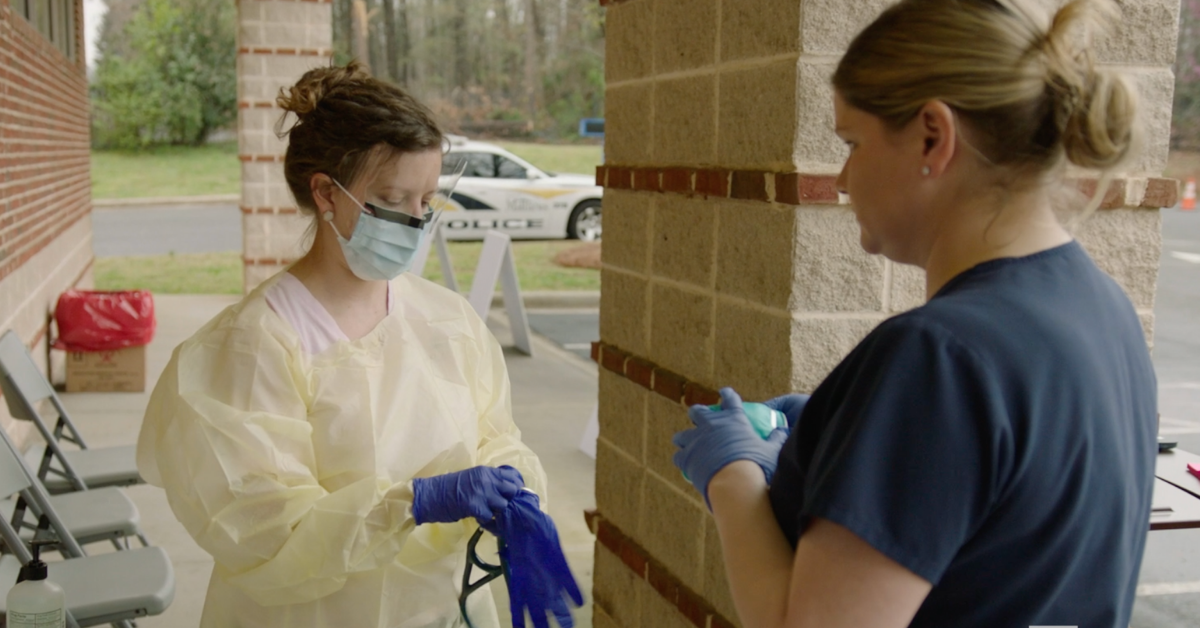
As the pandemic continues with highly contagious COVID-19 variants, it’s likely that you or someone you love has been exposed and had to go through the process of testing. With schools back in session, workplaces adopting travel policies and entertainment venues requiring verification for entry, testing is high in demand.
When you get the notification that you’ve been exposed to COVID-19, your first reaction is often to see how immediately you can schedule a test. However, in order to get the most accurate results, it’s important to test within the right time frame of your exposure or symptom onset.
“When done too early, COVID-19 testing can result in a false-negative,” says Dr. Jennifer Womack, an internal medicine specialist at Tryon Medical Partners Uptown. “The virus, if present in your body, is still in the process of multiplying and may not be at high enough numbers to show on a test yet.”
Dr. Womack has worked extensively with Tryon’s COVID-19 testing sites for patients and with their efforts to help workplaces with employee testing. She suggests knowing your best day to test for the most accurate results based on the scenarios below. Remember, no matter your scenario, it’s important to stay home and mask up while waiting for the result of your test.
Symptomatic
Vaccinated (and boosted) or unvaccinated, tests are the most sensitive after 24 hours of symptoms. If you have tested earlier than 24 hours after symptoms began and received a negative result, stay home, mask up and complete another test after three days of symptoms.
“Remember when we thought COVID-19 always presented with fever, cough and difficulty breathing? That is not the case anymore and it can be much more challenging to identify cases of COVID since vaccinated persons frequently have milder symptoms that are often attributed to “summer colds” or “sinus infections,” Dr. Womack says.
Symptoms of COVID-19 can include any or all of the following:
- Runny nose
- Postnasal drip
- Sore throat
- Cough
- Chest or sinus congestion
- Sneezing
- Swollen glands
- Fevers, chills or body aches
- Unusual headaches
- Exhaustion
- Diarrhea, nausea or vomiting
- Shortness of breath
- Chest tightness
- More rarely, a diffuse body rash or conjunctivitis (pink eye)
Vaccinated and exposed to a sick person
Wear a mask around others for ten days, and get tested on Day Five after exposure, if possible. Once the test is negative, return to usual activity. If you develop symptoms, get a test and stay home.
Unvaccinated and exposed to a sick person
Stay home for five days. After that continue to wear a mask around others for five additional days.
Test on Day Five, if possible. If the test is negative, continue to quarantine and test again after five to seven days. If you develop symptoms, get a test and stay home.
Traveled or attended a crowded event
If you’ve recently attended a crowded event like a wedding or concert or have returned from a trip, especially if you’ve gone through an airport, test for COVID-19 five days after your last day of exposure. This recommendation stands for those who are vaccinated and unvaccinated, as does masking up around others as you await your result.
Living with a sick person
Household members of sick persons should be tested as soon as they know they have been exposed.
“With highly contagious variants, the likelihood of getting sick while being in a house with a sick person is very high,” Dr. Womack says. “Even if you have a negative test initially, I recommend continuing to minimize your exposure outside the home and testing once or twice more. Talk to your doctor about the timing of testing in this situation.”
Quarantining
The Centers for Disease Control and Prevention updated their guidance on quarantining in late December 2021. Here’s what they say:
For people who are unvaccinated or are more than six months out from their second mRNA dose (or more than 2 months after the J&J vaccine) and not yet boosted, CDC now recommends quarantine for 5 days followed by strict mask use for an additional 5 days. Alternatively, if a 5-day quarantine is not feasible, it is imperative that an exposed person wear a well-fitting mask at all times when around others for 10 days after exposure. Individuals who have received their booster shot do not need to quarantine following an exposure, but should wear a mask for 10 days after the exposure. For all those exposed, best practice would also include a test for SARS-CoV-2 at day 5 after exposure. If symptoms occur, individuals should immediately quarantine until a negative test confirms symptoms are not attributable to COVID-19.
No matter your scenario, it’s important to know the best time to test for the most accurate results. This keeps you, your loved ones and the community safer from the spread of COVID-19. Find a testing site near you and consult the physicians you trust to stay well and informed during this pandemic.

